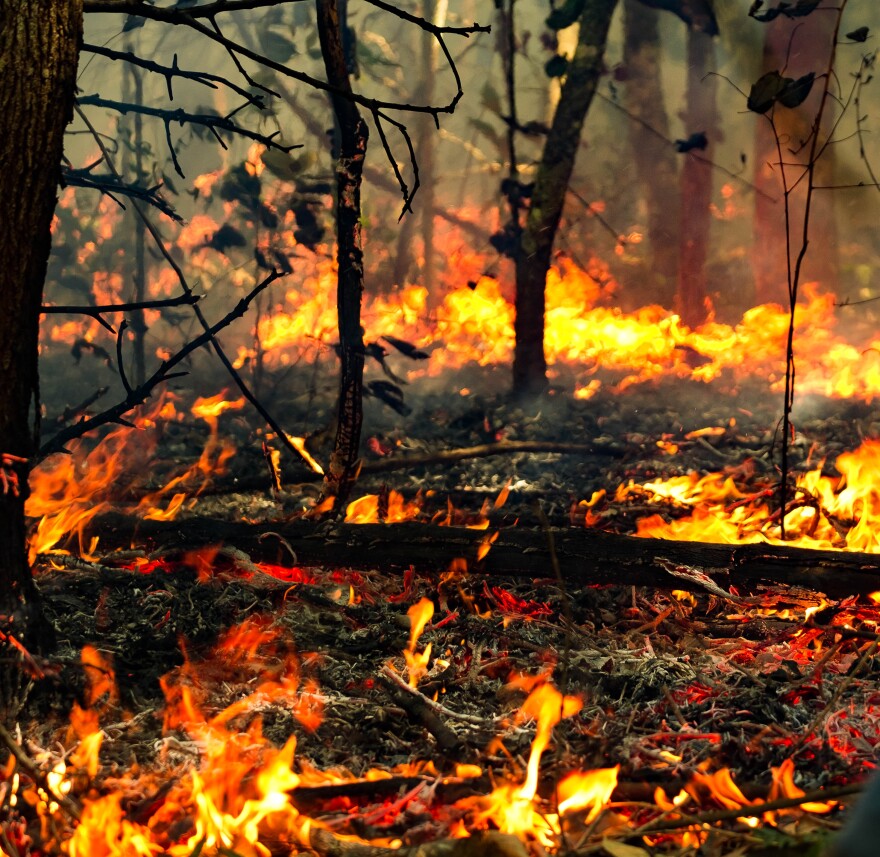Scientists from the Woods Hole Research Center and IPAM-Amazonia say the amount of carbon dioxide released into the atmosphere by fires burning in the Amazon rainforest could hasten the effects of climate change.
New estimates suggest the fires have produced as much as 140 million metric tons of carbon dioxide. That’s the equivalent to the annual emissions from about 30 million cars.
"Keeping forests standing is the cheapest way to avoid catastrophic climate change and mitigate its impacts," said Michael Coe, WHRC senior scientist and director of the Amazon Program.
According to Coe, 30 percent of all carbon emitted by humans is pulled out of the atmosphere by tropical forests.
"Tropical rainforests are the simplest way to keep the climate stable," he said. "They have this dual purpose of storing carbon, but also actively pulling it out... They're the only machine we have that takes carbon out of the atmosphere."
Coe compares these forests to giant, natural air conditioners for the earth. They take water out of soil and sunlight and turn it into water vapor. That process, he says, cools land surface.
But they're becoming increasingly vulnerable to fire, in part, because of climate change.
"We’ve got this combination of a warmer, drier climate, [then] a drought occurs, and then you’ve got fire sources from humans nearby. And what that means is the fires are much more flammable now, this decade, than they were a decade ago or two decades ago," Coe said.
The Brazilian government has restricted legal burning for land-clearing in the Amazon for 60 days in an effort to stop the burning. But, Coe says, the fires continue to burn and more needs to be done in the future to save the rainforest.
"We can’t afford to lose more."








